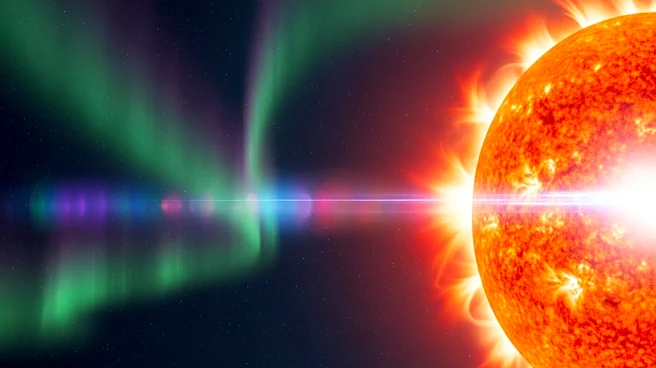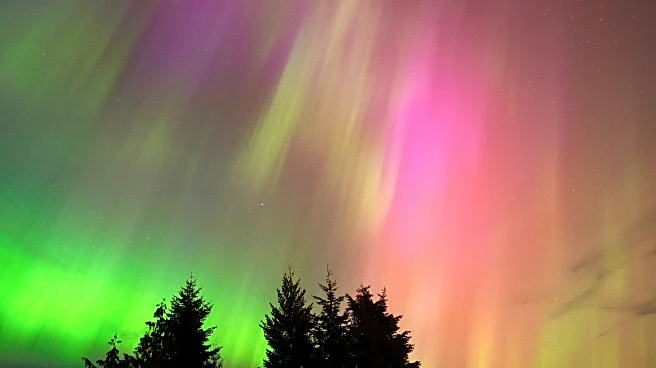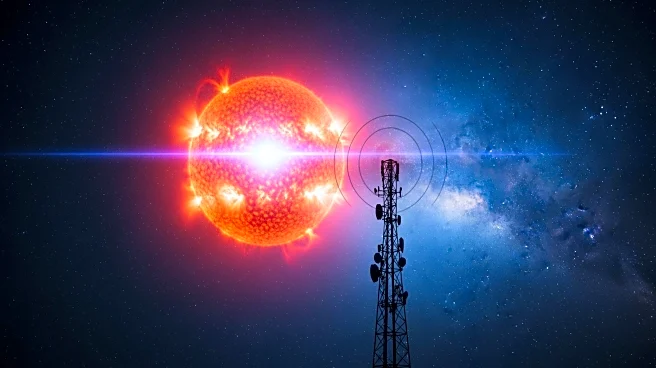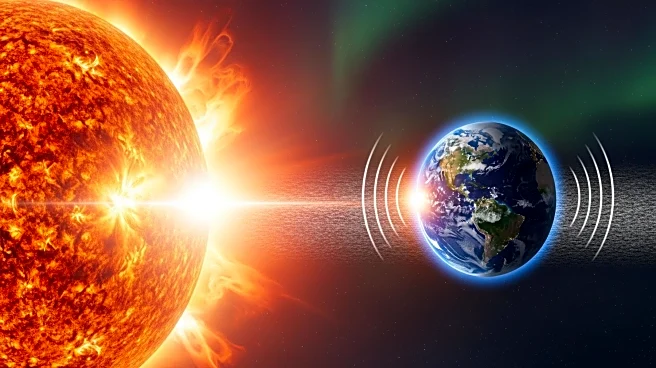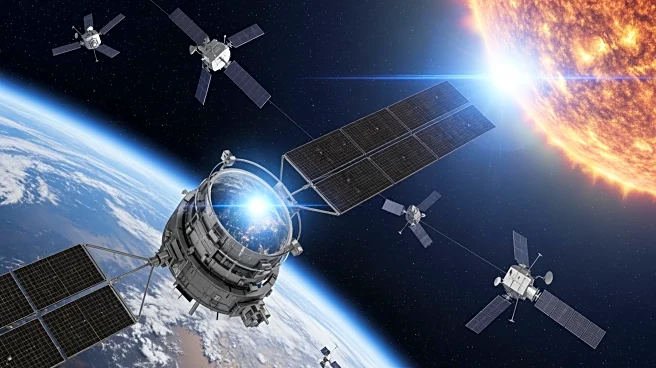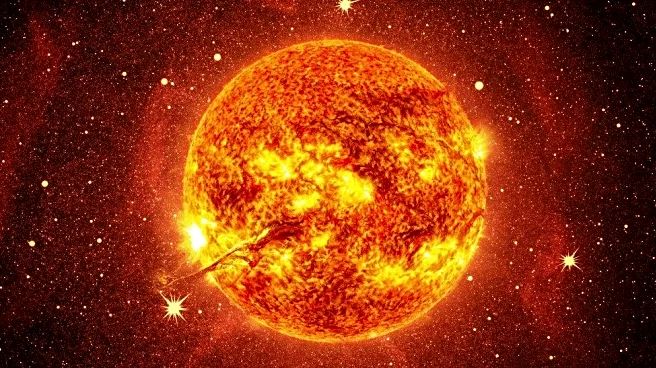What's Happening?
A surprise geomagnetic storm has arrived earlier than expected, reaching strong (G3) levels due to recent solar eruptions. The National Oceanic and Atmospheric Administration (NOAA) has issued a G3 geomagnetic storm watch,
anticipating further impacts from multiple coronal mass ejections (CMEs) launched from sunspot region AR4274. The storm has already resulted in auroral activity across Europe, Canada, and the northern U.S. The M7.4 solar flare that erupted on November 5 released a CME traveling at high speeds, expected to reach Earth soon, potentially triggering another round of geomagnetic storming.
Why It's Important?
Strong geomagnetic storms can disrupt satellite navigation, high-frequency radio communications, and power systems, particularly at high latitudes. The current storm provides an opportunity for aurora photographers and enthusiasts to capture the northern lights, which may be visible farther into mid-latitudes than usual. The ongoing solar activity underscores the need for continued monitoring and preparedness for potential technological disruptions.
What's Next?
NOAA's G3 storm watch remains in effect, with expectations of further solar impacts over the next 24 to 48 hours. Observers in Canada, northern Europe, and the northern U.S. are advised to watch for auroral displays. The sunspot region AR4274 continues to face Earth, suggesting more solar activity could occur in the coming days. NOAA will provide updates on the storm's progression and potential impacts.


